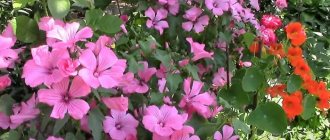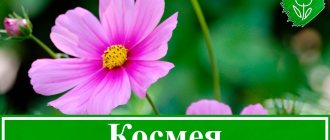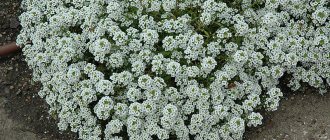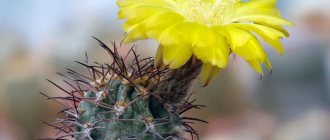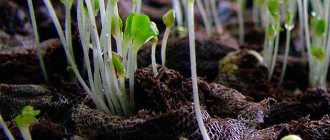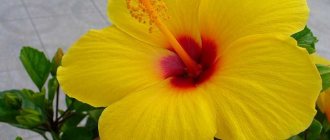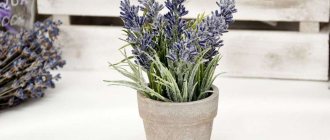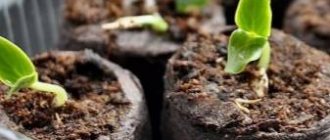Exotic plants with fabulous flowers that look like colorful butterflies are alstroemeria. Its flowers resemble freesia flowers, but they are larger and much more attractive, occurring in numerous colors, often multi-colored. Flowers can be grown for bouquets and as a garden or indoor plant. In this article we will tell you how to grow alstroemeria flowers - planting and care in open ground, show photos of interesting varieties, tell you where you can plant it and what substrate to choose for the pot.
Growing alstroemeria from seeds
How to grow alstroemeria from seeds so that it pleases you with its future flowering? There are two strategies for growing alstroemeria from seeds : directly sowing them in the ground in April-May or seedlings in February or March.
If you plant the seeds immediately in a pot with soil, you will need to work less on the seedlings, but they will bloom only in the third year of life. And if you have patience and grow seedlings , you can expect alstroemeria to bloom in the second year.
- To grow seedlings, you need to prepare the soil, 2 parts of which will be leaf soil, and 1 part will be turf. You can add perlite or clean sand to the mixture to loosen it.
- The soil must be thoroughly mixed and frozen in the cold or spilled with a weak solution of potassium permanganate.
- Next, you need to take a container with drainage holes in the bottom, pour a layer of expanded clay 2 or 3 cm high into it, and then fill the container with earth, not reaching a few centimeters to the edge.
- You should lightly compact the soil and distribute the seeds on its surface, pressing them slightly into the ground and sprinkling soil on top.
- Then you need to place the container with the seedlings in a bag and send them to the refrigerator, on the vegetable shelf for cold scarification. The seeds must spend a whole month there at a temperature of +2 to +5 °C.
- Every day you need to ventilate the seeds 2 times a day, remove condensation from the bag and moderately moisten the soil.
- When the seeds are removed from the cold and placed in a sunny place with a temperature of +20 to +25 ° C, you can expect them to germinate in 10 or 20 days, and possibly even a month. It is very important all this time to ventilate the seeds 2 times a day for an hour and lightly moisten the soil as it dries.
- When the alstroemeria has grown from 2 to 4 true leaves after the cotyledon leaves, you need to pick it, that is, you need to plant the plants. Each seedling should receive a separate “housing” - a 100-200 ml glass with drainage holes, expanded clay and soil for adult plants.
- When the root system fills the entire glass, you can transplant the seedling into a flowerpot for an adult plant.
Read interesting things about the homeland of Tradescantia with us.
Indoor nightshade is surprisingly easy to keep at home. Read more in this article.
Alstroemeria care
You will not find any difficulties in caring for alstroemeria; you need to follow a number of simple and accessible procedures.
- Watering alstroemeria.
Moderate, no more than once a week. The plant tolerates an excess of moisture worse than its lack. - Feeding alstroemeria.
Continue active feeding of the plant even after transplanting into open ground. Do not forget to combine and alternate organic and mineral fertilizers. - Mulching alstroemeria.
After each watering, it is necessary to weed the soil around the plant, remove possible weeds and add mulching material (needles, sawdust). There is no need to remove the mulch before the next watering and loosening; after it gets into the ground, it will act as nutrition and drainage for the crop.
- Alstroemeria thinning.
Inspect the flower bed regularly and remove any stems growing inside the bush. After flowering, cut off the peduncle so as not to spoil the decorative effect of the flowerbed and control self-seeding. - Alstroemeria propagation.
The method that I mentioned above - dividing the alstroemeria bush - is the most effective, fastest and affordable method of propagation. Divide the alstroemeria rhizome with a sharp knife, followed by disinfection of the sections. - Wintering alstroemeria.
In November, cut off the leaves and shoots of alstroemeria almost to the root, cover the flowerbed with three layers of cover: spruce branches, film and soil. If you live in the northern region, plant alstroemeria directly in a greenhouse or greenhouse with controlled air temperatures during the winter months.
Alstroemeria grown by yourself will always diversify the bouquet collected for the home, and will also add bright colors to the flower beds on your site.
Sources:
https://agronomu.com/bok/1372-osobennosti-uhoda-za-alstromeriey-v-dome.html https://floristics.info/ru/stati/sadovodstvo/4799-alstromeriya-vyrashchivanie-v-otkrytom-grunte .html https://diy.obi.ru/articles/alstromeriya-v-otkritom-grynte-osobennosti-yhoda-20800/
Choosing a location and lighting
Alstroemeria loves light . In summer, a south-facing window will need shading, and in winter you don’t have to worry about sunburn. Alstroemeria requires about 14 hours of daylight for abundant flowering.
In summer, alstroemeria will feel great at room temperature , and in winter - from +8 or +15 °C. Summer temperatures above +28 °C will cause growth to stop and buds to drop. If it is too warm in winter, flower buds will not be able to develop and the plant will not bloom in summer.
Reproduction methods
Alstroemeria seeds
You can even grow alstroemeria with seeds, but in this case the plant will bloom only a year after the seedlings emerge. If you want to admire the blooming flowers this year, you will have to purchase ready-made seedlings at a flower shop.
If you like to tinker with seeds and collect them with your own hands, then you need to understand that new shoots may not retain all the characteristics of a certain type of flower.
But using the seed propagation method, you can get completely new varieties of alstroemeria. When purchasing seeds of this crop, you can be sure that you will find your flower variety, which cannot be said about seedlings, a certain type of which is much more difficult to find. Based on this, it would be more prudent to start growing alstroemeria on your site from seeds.
Watering and humidity
In spring and summer, watered sparingly, waiting for the soil to dry out between waterings. In winter, watering should be limited - the cooler the content, the less moisture the plant requires.
Waterlogging and drought are equally dangerous for alstroemeria. It is necessary to spray alstroemeria only in hot weather.
Remember that water for irrigation and spraying should be soft and at room temperature.
Why does the plant dry out and turn yellow?
Alstroemeria (photos of flowers are presented in the article for reference) can dry out and turn yellow for the following reasons:
- irregular watering;
- cold water irrigation;
- exposure to drafts;
- stagnation of moisture at the roots.
In some cases, this phenomenon can be caused by pest invasion or disease.
Transfer
Planting and caring for alstroemeria requires an annual transplant in the spring.
For a very powerful and rapidly developing root system of the plant, a large pot with a deep bottom is required. A quarter of the pot should be occupied by drainage in the form of pebbles or expanded clay.
The ideal soil mixture for adult alstroemeria is:
- 2 shares of leaf soil;
- 1 share of humus soil;
- 1 share of peat land;
- 1 share of pine bark;
- 1 share of perlite or vermiculite.
You can also use ready-made soil for azaleas.
Use in landscape design, examples
Alstroemeria is widely used in landscape design.
Examples:
- design of classic flower beds and flower beds;
- planting along garden paths;
- creating a low living fence;
- construction of ridges;
- decoration of terraces, balconies;
- design of the middle part of complex compositions.
Alstroemeria combines especially well with roses, chrysanthemums, gerberas and lilies. Its bright beauty is also enhanced by sedums and tenacious plants.
Diseases and pests
Due to its susceptibility to many diseases, alstroemeria needs preventive treatment with Fundazol several times a year.
Among the pests, alstroemeria can be favored by the following representatives: spider mites, flower thrips, and mealybugs.
As you can see, alstroemeria is not a very capricious plant that can be grown indoors.
Even a novice gardener can grow alstroemeria from seeds, and caring for it will not be difficult. You just need to treat the plant with love and attention - and alstroemeria will answer you with a scattering of wonderful “Peruvian lilies”, bringing wealth and happiness to your home.
And for the most curious, we invite you to watch a video about alstroemeria https://www.youtube.com/watch?v=ZZa7HiIxFtU
Description
Alstroemeria is a flower that amazes with its beauty.
This is a herbaceous plant with huge flowers and powerful stems. Alstroemeria can be annual or perennial. It is necessary to describe the characteristics of this home plant. The meaning of the name in the language of flowers is friendliness, as well as a wish for financial well-being.
Important! People often wonder how to spell it correctly: astrameria or alstroemeria? The correct second option. What does alstroemeria look like? A characteristic feature of the flower is resupination, that is, the petioles are twisted by 180 degrees.
Thus, the top of the sheet is at the bottom, which creates an interesting visual effect. The color of the flowers can be of different shades from yellow to red, you can also see lilac and blue alstroemeria. The flower consists of 6 petals placed in two circles. You can often see interesting spots on them. The petals themselves may differ from each other
What does alstroemeria look like? A characteristic feature of the flower is resupination, that is, the petioles are twisted by 180 degrees. Thus, the top of the sheet is at the bottom, which creates an interesting visual effect. The color of the flowers can be of different shades from yellow to red, you can also see lilac and blue alstroemeria. The flower consists of 6 petals placed in two circles. You can often see interesting spots on them. The petals themselves may differ from each other.
Flowers usually show longitudinal dark strokes, which are thick closer to the edges and thin and small closer to the middle. The nectaries can be found at the base of the inner circle. The stamens are also placed in two circles. The anthers are slightly elongated.
Alstroemeria in bush form
The time of appearance of flowers is spring. The plant stops blooming in the summer, although if you follow the care requirements at home or in the garden, the rhizomatous shrub can delight you with its flowering in early autumn. Under natural conditions, hummingbirds and various insects that pollinate flowers help the plant reproduce.
Instead of a fruit, the plant forms a capsule in which round seeds develop. When the flower reaches maturity, it bursts and the seeds spread throughout the world with the help of the wind.
Important! The disadvantage of the plant is that in mid-latitudes in winter conditions it can freeze. Therefore, in regions with such a climate, it is advisable to breed it in a greenhouse or at home.
Alstroemeria is grown in open ground only in subtropical and tropical zones.
